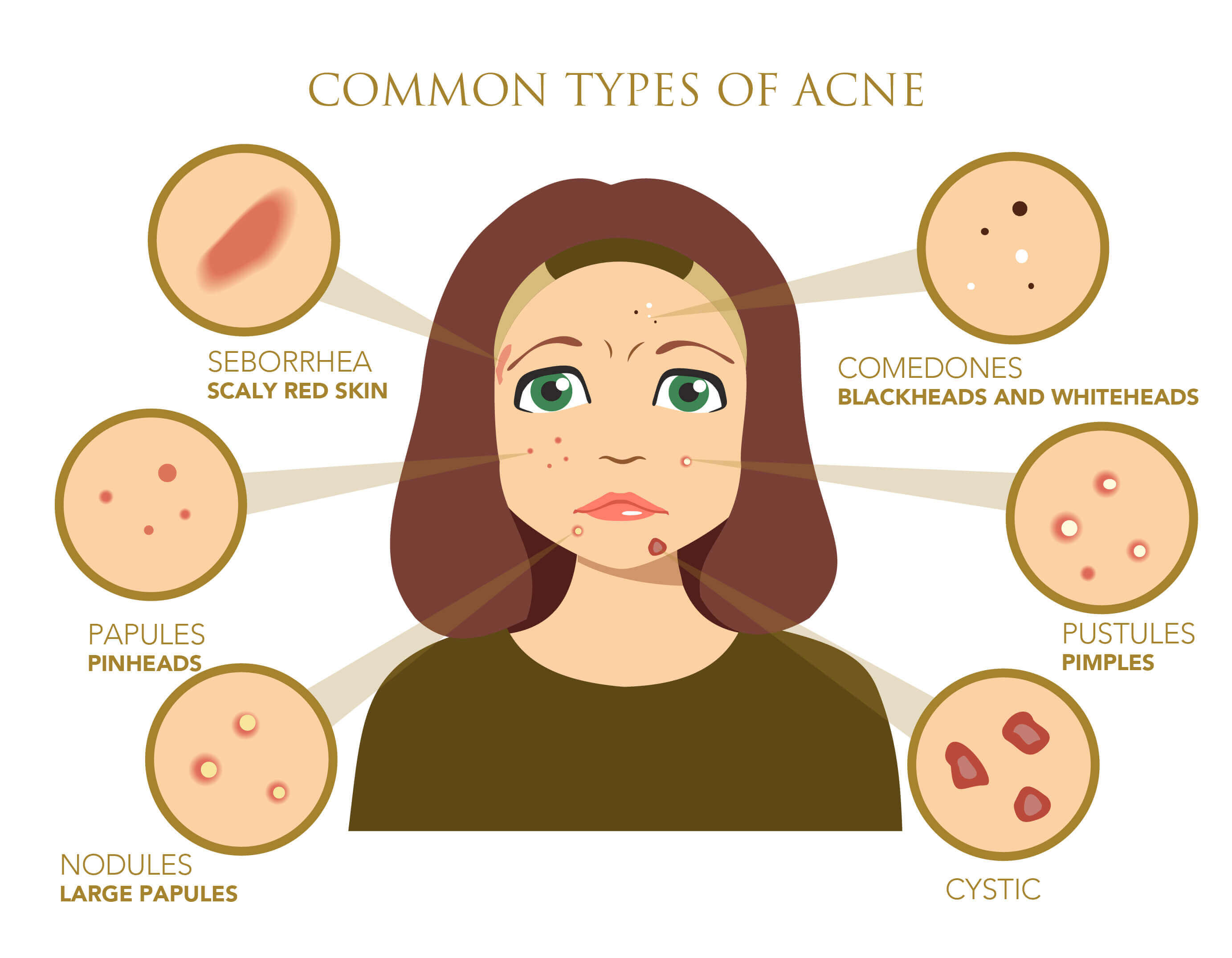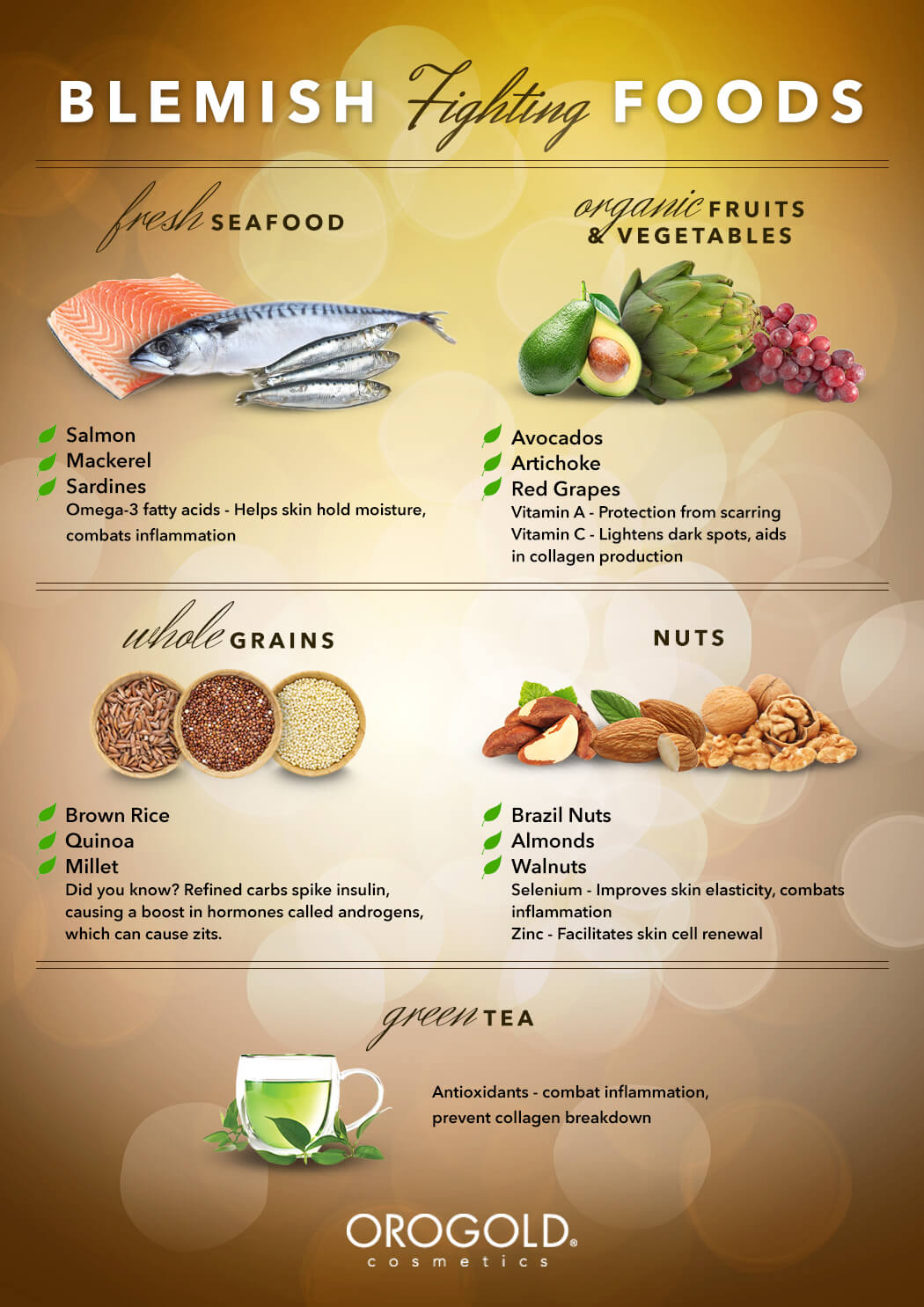What You Need to Know about Blackheads, Whiteheads and Pimples

Pimples, zits, blemishes. No matter what you call them, one thing is for sure: You don’t want them on your face.
No matter how much you try to cover them with makeup, they just keep on showing up. Now, if only romantic dates were this persistent… but, we digress.
When it comes to acne, there’s plenty of misinformation floating around on the web. It’s easy to get sucked into trying the latest treatment only to find out later on that they don’t work.
So how exactly do we get acne? More importantly, how do we get rid of them?
From tiny whiteheads and blackheads to red and inflamed pimples, here’s what you need to know about acne.
The Thing with Acne
Acne vulgaris, the medical term used for common acne, affects both teens and adults. The bumps on your face may go by different names, but they all fall under one family.
The most common types of acne that we often see are blackheads, whiteheads, and pimples.
Blackheads and whiteheads are classified as comedones (singular: comedo), which can either be open or closed:
- Blackheads – open-faced comedones usually found around the nose. Sometimes, they’re flat. Other times, they appear as tiny black lumps. Most people think that blackheads are dirt trapped inside the pores, but they are rarely caused by filth or pollution. Blackheads form when the follicles are clogged with bacteria, dead skin, and oil. These react with the oxygen in the air, turning them into unsightly black lumps.
- Whiteheads – closed comedones that appear as white spots on the skin, almost like tiny pimples. Excessive oil production is the main reason why get blackheads. When our skin produces too much oil, much of it is trapped between skin layers. The results are whiteheads that commonly pop on the nose, chin, and forehead.
Blackheads and whiteheads are non-inflammatory types of acne. They are not painful and do not cause any swelling.
Then there are pimples, which are also known as pustules.
Pimples are an inflammatory type of acne that often leads to scarring. These tender bumps are usually red and are sometimes filled with white or yellow pus.

Why do we get acne?
Some people think that certain foods like pizza and chocolate cause acne. While there’s some truth to that, food is not the only reason why our faces are sometimes peppered with zits.
Hormonal changes, stress, and heredity are the reasons behind the ugly blemishes on our skin:
- During puberty, our hormonal levels fluctuate. When the body produces too much testosterone, the skin glands work double time to produce insane amounts of sebum, which leads to breakouts. Hormonal changes during menstruation and pregnancy also trigger the onset of acne.
- Although not a direct cause of acne, stress can also exacerbate breakouts. In a nerve-wracking event, the body releases androgens and cortisol or stress hormones. These prompt the skin glands to produce more oil, which could lead to a breakout or worsen existing acne.
- If your parents have struggled with acne, it’s likely that you would have to deal with this skin condition as well. Genetics has a huge impact on how our body works. Your genetic history may dictate how your body responds to attacks to the immune system – whether it will produce painful and pus-filled pustules or only small bumps on the skin.
Other things you need to know about acne:
It’s Not Just a Teen Problem
According to a study made by the International Dermal Institute, 40 and 55 percent of the adult population age 20-40 still suffer from acne and oily skin.
As if worrying about wrinkles is not bad enough, some adults have to deal with breakouts as well. And to make things worse, treating adult acne is more challenging because the skin is more sensitized.
Unlike teenagers who have resilient skin, adults have to consider other skin issues like dryness (yes, you can still get acne even if you have dry skin), inflammation, and wrinkles.
But there’s still hope. If you suffer from acne as an adult, you’d be glad to know that there are available treatments, which we will talk about later on.
They Don’t Just Appear on the Face
Acne usually appears on the cheeks and nose, around the mouth, and on the chin. But these troublesome breakouts may also grow on the chest back, and shoulders. And sometimes, on places where the sun doesn’t shine.
And if you love to pop zits or squeeze the gunk out of the blackheads on your nose, you could be doing harm to your health as well.
The triangle of death, which is the area from the corners of the mouth to the area between the eyebrows, is linked to certain nerves and blood vessels that are connected to the brain.
Sounds incredible to be true?
This inverted triangle of death isn’t just an urban legend. If you pop a pimple on your nose and it becomes infected, the infection could lead to the formation of blood clots, and eventually, death.
Popped a pimple and worried that you might die? Well, technology and medicine have come a long way:
While a popped zit may not immediately lead to a blood, it’s better to be safe than sorry. Applying a topical acne spot treatment could help prevent infection.
Even better? See your dermatologist for professional (and safer) treatments.
They Bring Clues About Your Health
Think that your pimples are due to stress or hormones?
Think again:
The location of your acne can reveal a lot about your health:
- Forehead – You could be having digestive or liver issues. It’s also possible that you’re not getting enough sleep or just had too much stress.
- Cheeks – Did you have too much sugar? Contrary to popular belief, sugar (and not grease) is one of the major causes of acne. That, or you’re holding your phone too close to your face.
- T-zone – Your face is producing too much oil. The T-zone is where we often oil up, but too much oil in that area could lead to clogged pores, which result in blackheads and whiteheads.
While face mapping is not widely used to diagnose ailments, there’s a lot of wisdom to learn from this Chinese technique. After all, symptoms of illnesses may manifest physically, oftentimes on the skin.
How to Get Rid of Acne
Acne is a result of many different things. In addition to hormonal changes, genetics, and stress, some people believe that acne could be due to an unhealthy diet. Grease, in particular, has gotten a bad rap.
But oily foods are not the main culprit. Neither is dairy.
According to the American Academy of Dermatology (AAD), a high glycemic index may be the reason for breakouts. In a 2007 study of 23 Australian males (age 15 to 25 years old), researchers found that a low glycemic diet had a significant impact on acne severity,
The subjects did not only lose weight after eating a diet low in sugar, but they also showed improved insulin sensitivity at the end of the 12-week study.
Also, there are established health-boosting foods that promote your skin’s health and natural defenses. Curious about what these are? Check out our infographic below.

If you’re concerned about individual trigger foods, one good way to discover what they are is by logging in a journal. Keeping a record of all the foods you ate during the day and how your skin reacted could help you figure out if any food triggers breakouts.
Topical Acne Solutions
If you prefer a more topical approach, you may be more interested in the different treatments that are available to lessen the appearance of acne and reduce scarring. Keep in mind that if you have sensitive skin, it’s best to first consult a dermatologist before trying out these over-the-counter treatments.
Tea Tree Oil
A popular natural acne treatment. Tea tree oil has antifungal and antimicrobial properties that help disinfect and prevent future acne from cropping up. This essential oil penetrates the skin layers to unclog pores and normalize the sebaceous glands.
AHA and BHA
Exfoliants that break apart or “unglue” the dead skin cells. This process allows for the skin to shed without any harsh peeling. Although AHA and BHA are both exfoliants and have shared benefits (e.g. improving dull, uneven skin tone and making the skin look young), they also have their own individual functions: AHA targets the skin surface while BHA helps unclog pores. Can you use both AHA and BHA? Yes, you can, but not together because doing so will over-exfoliate the skin.
Salicylic Acid
Perfect for mild acne. Salicylic acid does not control sebum production and kill bacteria like tea tree oil does. But it helps unclog pores by dissolving the dead skin that is trapped inside. As a type of beta-hydroxy acid (BHA), salicylic acid is a mild treatment available in 0.5%-2% concentrations. It does not cause skin redness and inflammation, unlike other treatments.
Benzoic Peroxide
A powerful antimicrobial. Benzoyl peroxide works by killing acne-causing bacteria. It is best used alternatively with salicylic acid to remove for smoother, blemish-free skin. Benzoyl peroxide comes in three concentrations (2.5%, 5%, and 10%) and is best used for moderate to severe acne. How fast can you see the results? In as early as five days, you should be able to tell the difference. But the downside to benzoyl peroxide is that it causes peeling and redness.
Niacinamide
Also known as vitamin B3 or nicotinamide. Niacinamide helps reduce skin sensitivity, which is common among people with oily and acne-prone skin. It also helps create a stronger barrier for your skin to prevent pollution and other irritants from entering the skin. Because it contains high levels of ceramides, niacinamide is great for moisturizing dry skin.
Hydrocolloidal Patches
Perfect for emergency skincare situations. Acne patches are spot treatments that suck the life out of pesky pimples overnight. These tiny patches contain tea tree oil and salicylic acid to dry out acne. Since they are left overnight on the skin, acne patches deliver the active ingredients more efficiently through occlusion. The ingredients penetrate the skin better, which results in faster healing. One caveat: If you’re allergic to one of the ingredients, your pimples could get worse.
What about oral acne medication?
If you’ve tried all topical options but still don’t see encouraging results, oral acne medications may be for you. But these should only come with a prescription after a proper consultation with a dermatologist.
Because they are systemic medications (they do not only affect your skin but other parts of the body as well), oral acne treatments require closer monitoring.
Women are required to take pregnancy tests prior to starting medication to prevent risks to future pregnancies.
Although mostly effective, oral acne medications work best in conjunction with topical acne treatments. Oral acne medication is not to be taken for the long-term, so you should have other treatments on standby.
Acne Prevention is Still Better than Cure
There’s no doubt that with modern medicine, people can control and treat their acne more efficiently. There’s also a lot of talk about acne vaccines, which sound promising, but there’s not enough evidence to back the claims.
When it comes to blackheads, whiteheads, and pimples, the old-school methods of cleansing, toning, and moisturizing the face still work.
To prevent acne from spreading, avoid popping or squeezing them to reduce the chances of scarring. Being selective with your skincare products and having the patience to wait for the results in between treatments also help in preventing and treating current acne.
As always, consult a dermatologist first before getting into any kind of treatment whether it may be oral or topical.

